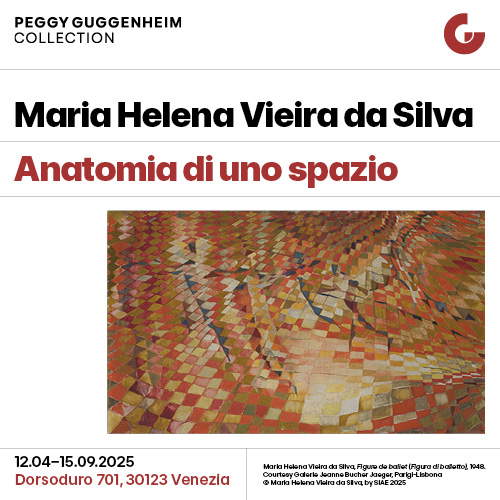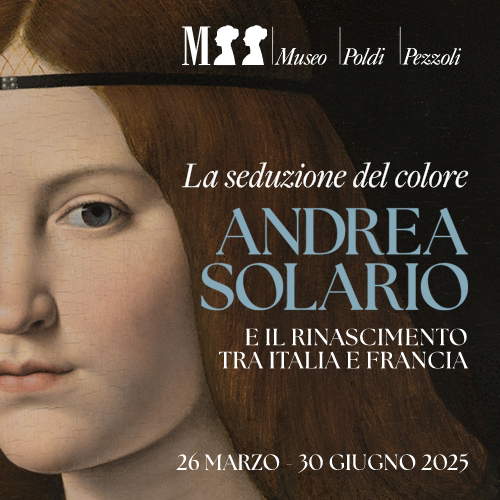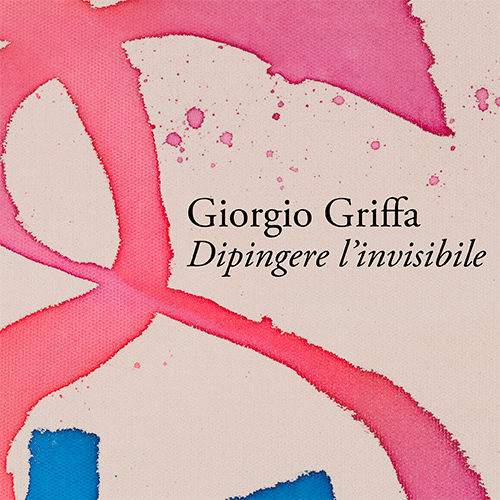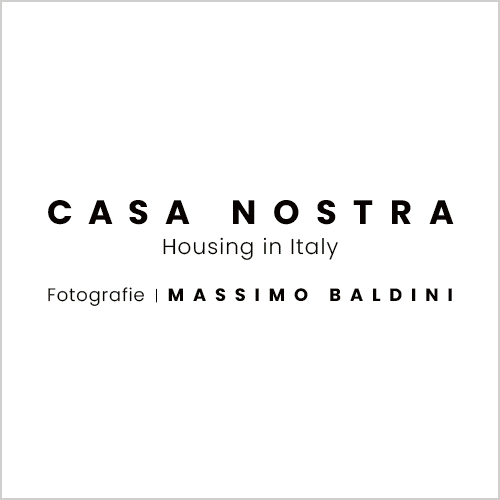Florence, the Salone di Donatello at the Bargello reopens after a year with a new layout
The Salone di Donatello, the beating heart of the Bargello National Museum in Florence, reopens to the public today after nearly a year of restoration and refitting work. At 18 meters high and covering an area of 445 square meters, this monumental space once again shines, returning to visitors its extraordinary heritage of sculptures, absolute masterpieces of the Renaissance season.
The centerpiece of a visit to the Bargello, the Salone houses nine masterpieces by Donatello: from the celebrated bronze David to the St. George, from the Marzocco to theAttis, from the marble David to the Dancing Putto, passing through the Crucifixion, the Head of a Bearded Man and the Madonna of Via Pietrapiana. To these are added works made in the artist’s workshop, such as St. John the Baptist Martelli, carved together with Desiderio da Settignano, and others of doubtful or partial Donatello attribution, nevertheless an expression of his school.
Alongside the masterpieces by the master, the new display offers a broader look at the Florentine artistic context of the early Renaissance, exhibiting works by artists who were founding fathers of modern sculpture. Thus, one can admire the panels submitted by Filippo Brunelleschi and Lorenzo Ghiberti to the famous 1401 competition for the Baptistery’s North Door, along with the refined creations of Luca della Robbia, inventor of glazed terracotta, and the interventions of Donatello’s collaborators and pupils such as Michelozzo, Desiderio da Settignano, and Bertoldo di Giovanni.
The rearrangement, involving a total of 65 works, was curated by Ilaria Ciseri with coordination by Massimo Osanna, director general museums of the Ministry of Culture, and restoration supervision by Benedetta Cantini. The intervention is part of a larger redevelopment project that has already affected other rooms in the museum, including the Magdalene Chapel, the Hall of Ivories, the Sacristy, the Baroque Room and the Hall of Majolica, continuing the path traced by previous director Paola D’Agostino for the five locations of the Bargello Museums.
The museographic choices favor narrative clarity and stylistic legibility. An emblematic example is the new arrangement of Donatello’s two Davids: the bronze one is now placed at the center of the Salon, as if to embody its identity, while the marble one is juxtaposed with the St. George, facilitating direct comparison between the two works and illustrating the sculptor’s rapid artistic evolution.
Among the most significant new features is the arrangement of Donatello’s two Davids: the bronze David, placed in the center of the room to emphasize its role as an authentic icon of the museum, and the marble David, now juxtaposed with the St. George. The new placement of the two Davids allows a direct comparison between the works, emblematic of the sculptor’s rapid stylistic evolution. The position of Donatello’s Attis and Verrocchio’s David has also been reconsidered, and they too have been relocated as part of a layout that aims to restore greater narrative coherence and legibility to the exhibition itinerary. The five central sculptures now rest on platforms equipped with anti-seismic and anti-tip devices, with integrated steel structures and soles made of special materials capable of absorbing vibrations, guaranteeing safety and protection for the works.
Technology also plays a starring role in the educational component: all captions are now accompanied by QR codes, with access to descriptive cards in Italian and English, in both text and audio format. Starting in May, free braille booklets dedicated to Donatello’s main masterpieces will also be available, with a view to greater inclusivity and accessibility.
Some works have been relocated to their original locations, to strengthen the link with their historical context. This is the case with Desiderio da Settignano’s Martelli Coat of Arms, which will be on view at the Casa Martelli Museum, and Michelozzo’s two Sybils, which have returned to the Orsanmichele Museum. TheAnnunciation, recently attributed to Walter Monich, is instead in storage at the Museo Nazionale d’Abruzzo, while new interior arrangements have also affected Francesco da Sangallo’s St. John the Baptist, now in the Michelangelo Room, and the bronzeEros, now attributed to Guglielmo della Porta and relocated to the Sala dei Bronzetti.
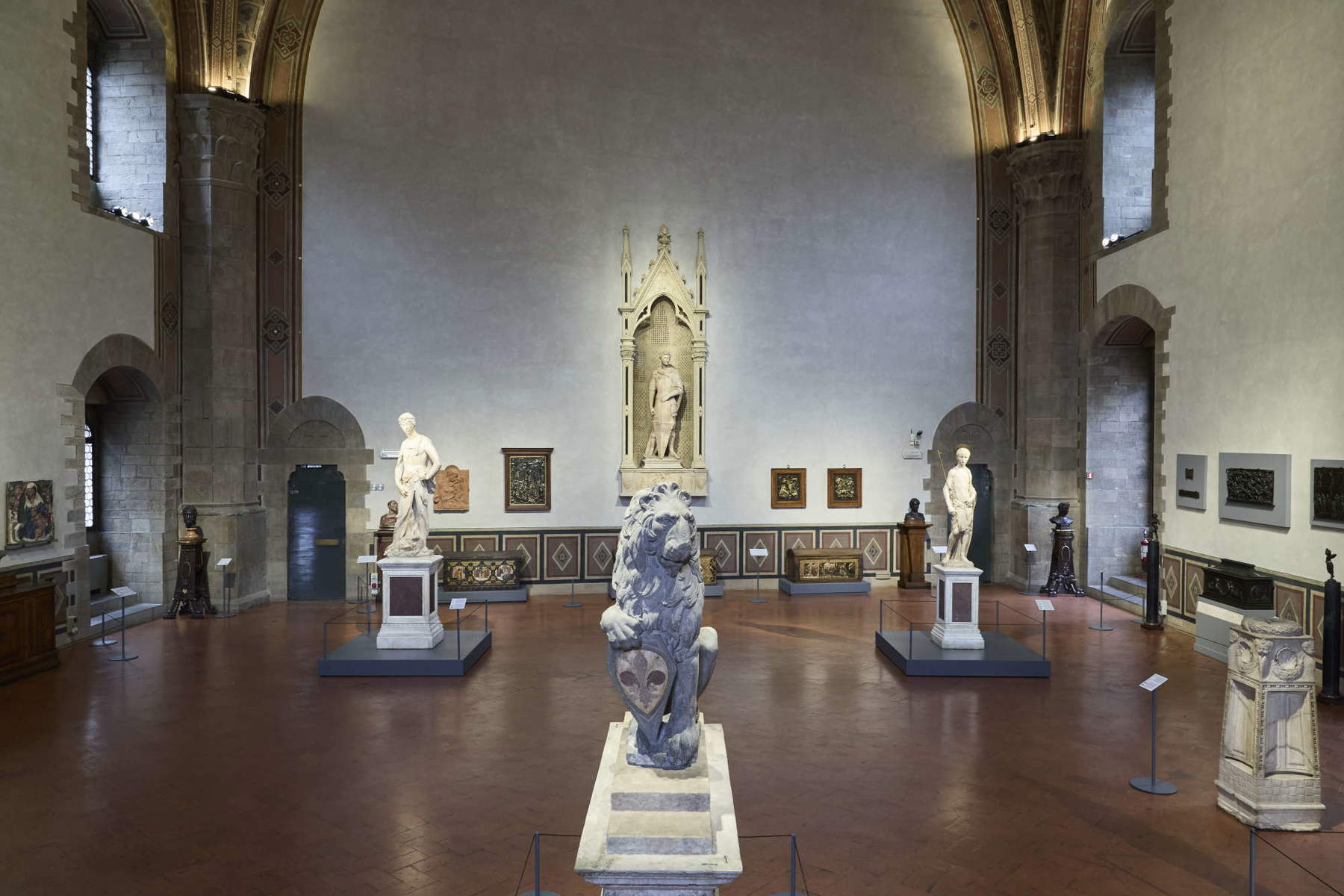
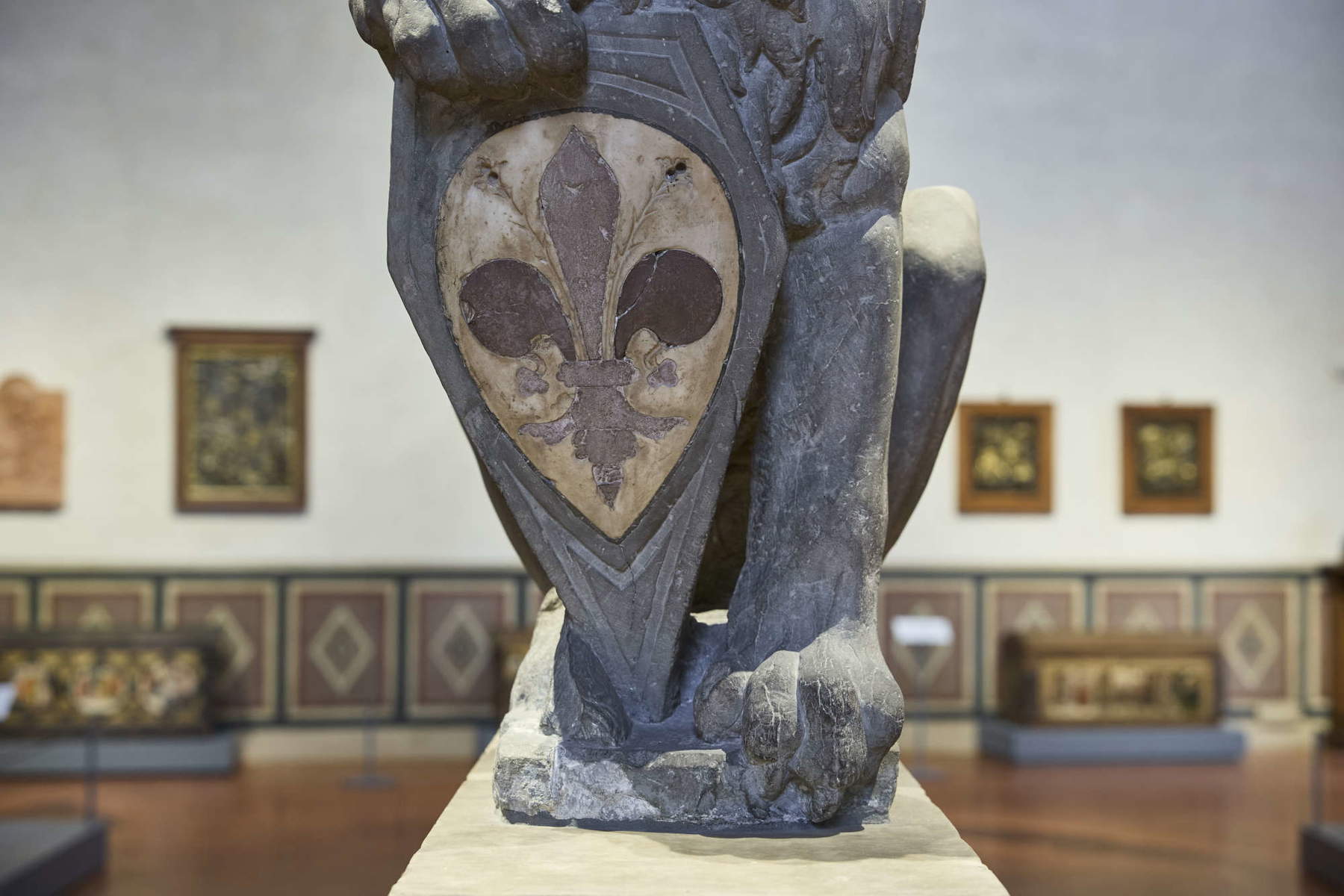
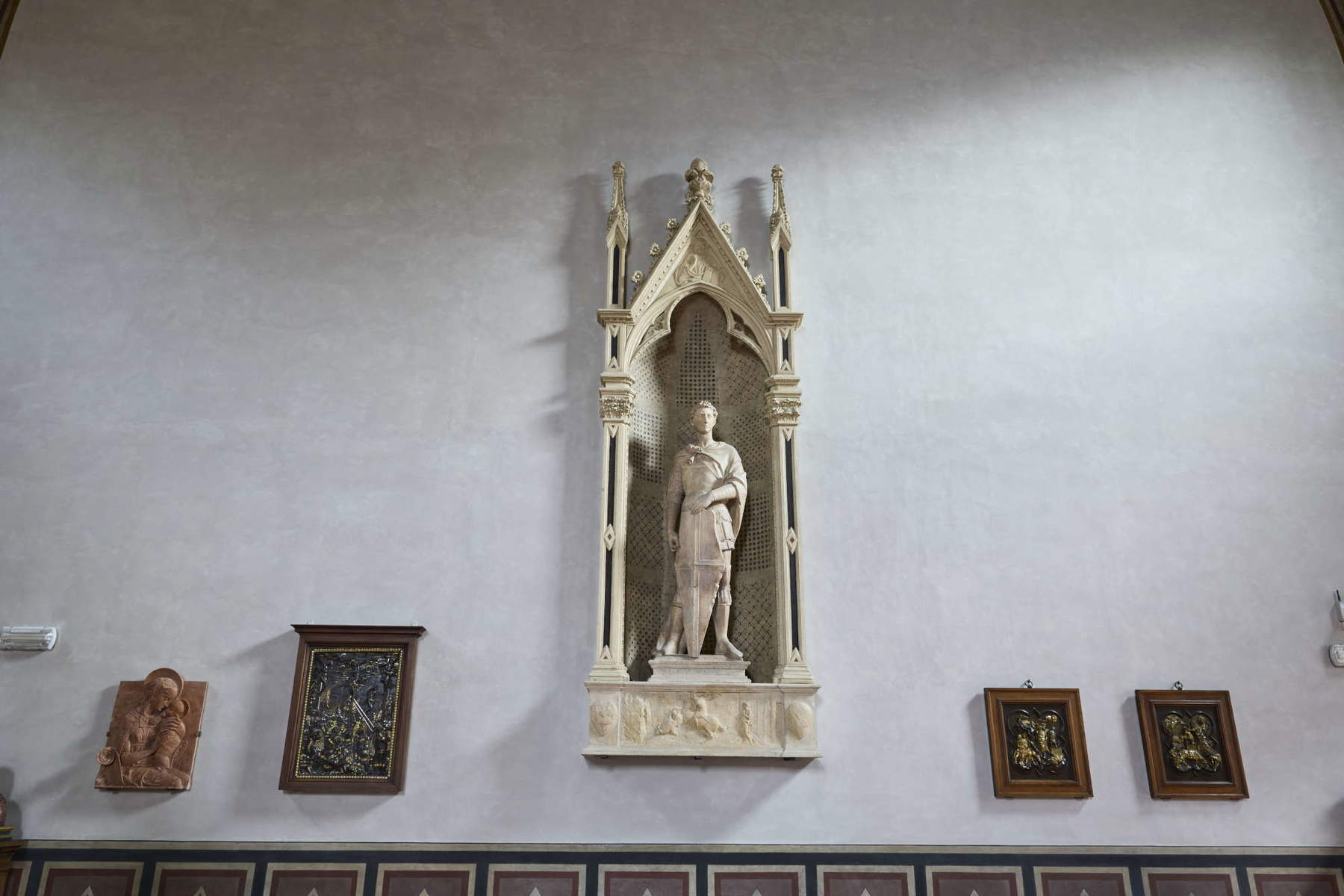
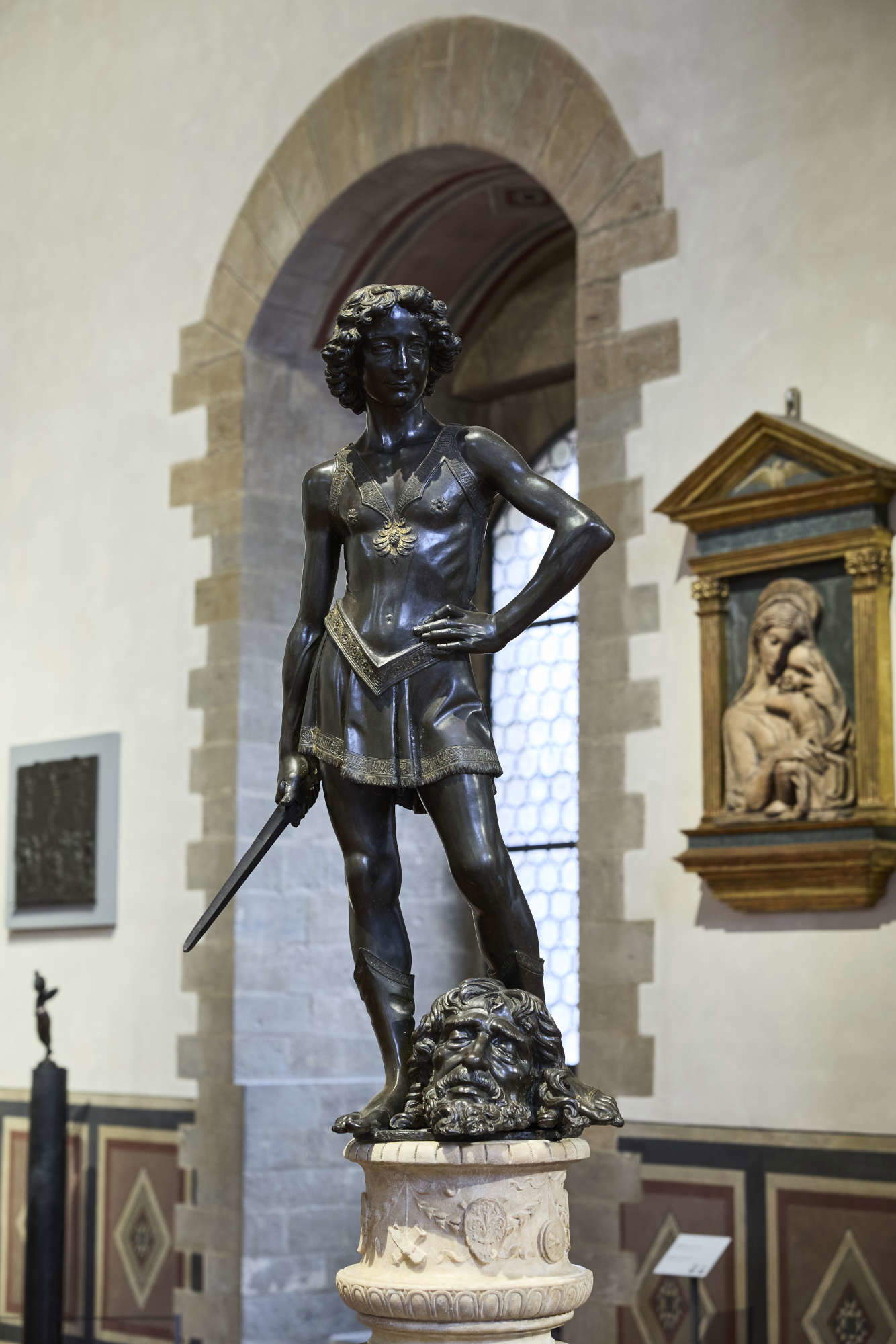
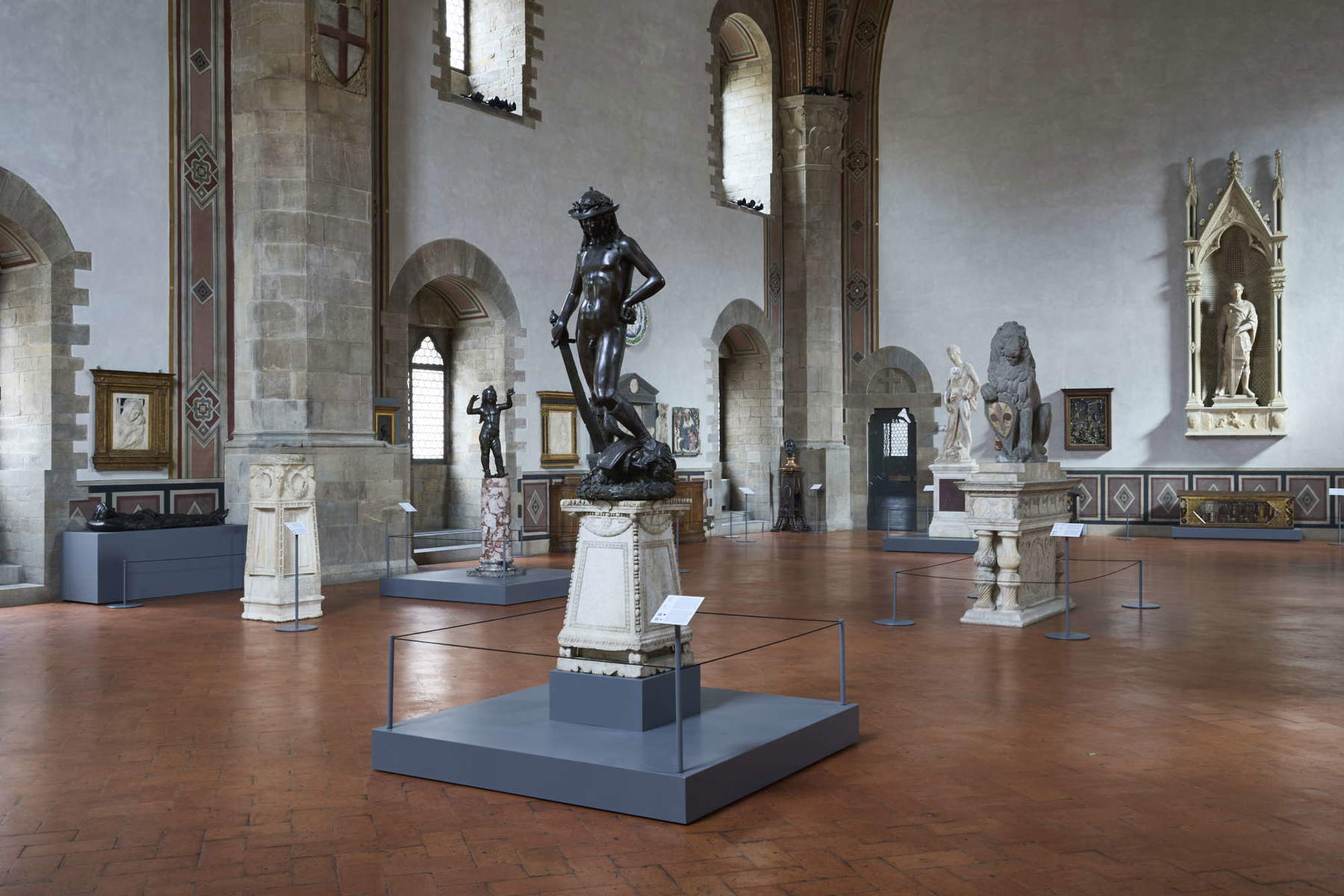
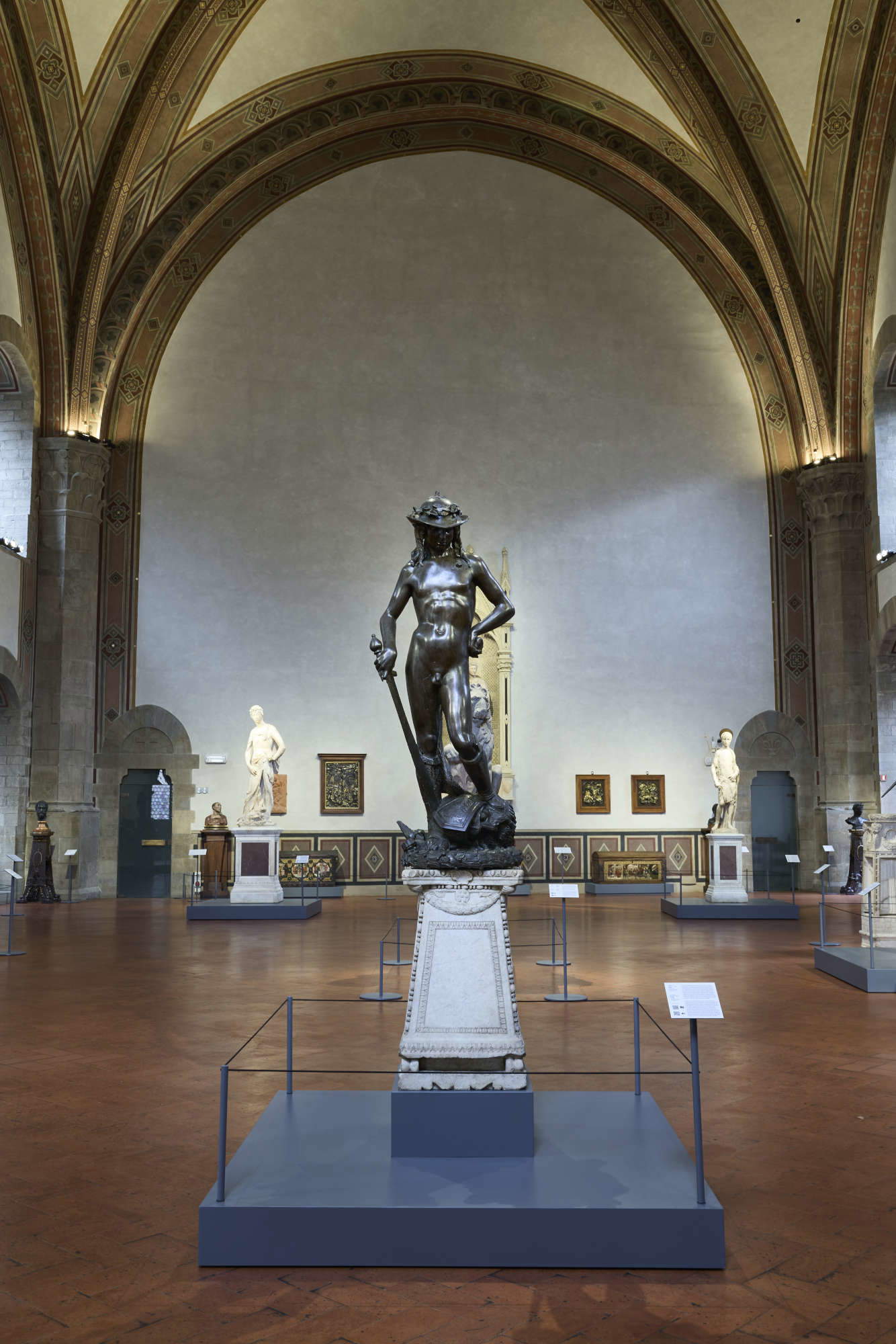
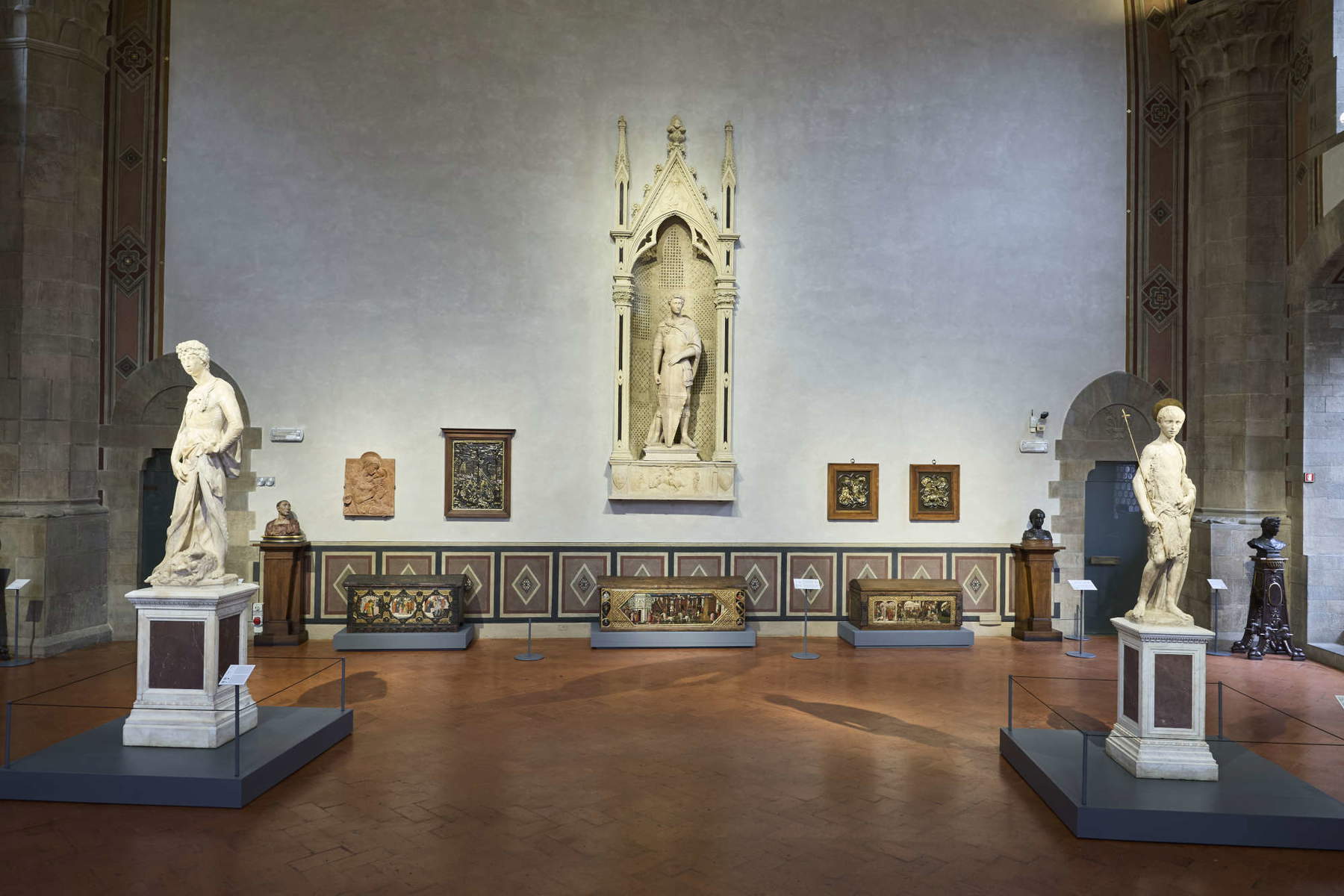
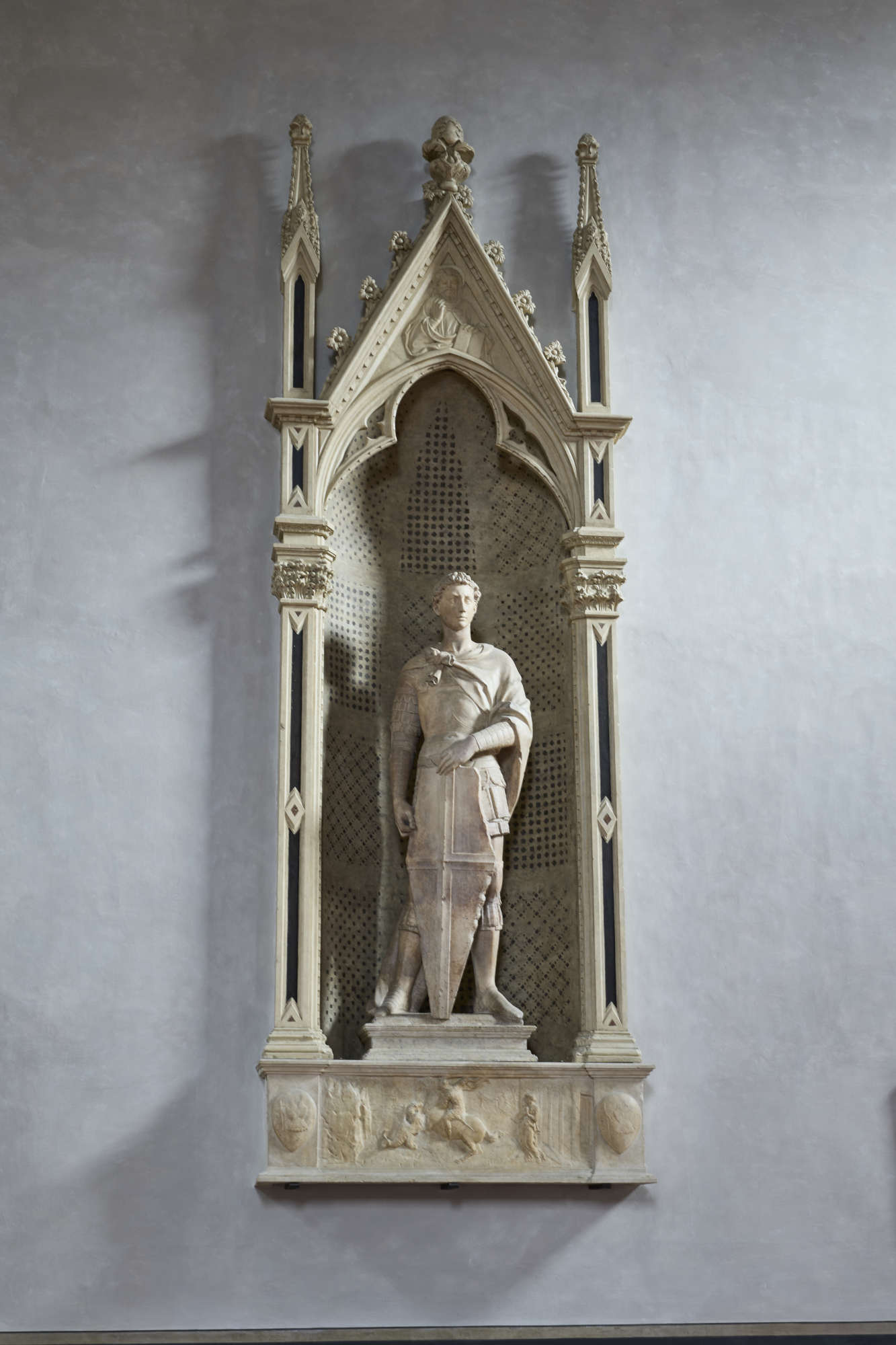
The restoration of the hall
The restoration, conducted on more than 2,000 square meters of surface area, included cleaning and consolidation of the walls and vaults, recovery of the stone elements, revision of the colors with lime glazes compatible with the original hues, and a general improvement of lighting and architectural spatiality. Pictorial decorations were integrated in a mimetic manner, removing previous repainting, while pillars, windows, and stone steps were carefully cleaned.
Among the most important structural interventions, the consolidation of the large mullioned window on the south wall, which was damaged at the top, was carried out with the cooperation of the Sertec studio and the PT Color company.
There was also no shortage of targeted restoration on some sculptures. Luca della Robbia’s glazed terracotta tondo, Madonna delle Cappuccine, underwent cleaning and color reintegration, while the bronze Saint John the Baptist attributed to Michelozzo revealed traces of gilding, treated with laser technologies and protected with specific products to ensure the hold of the gold leaf.
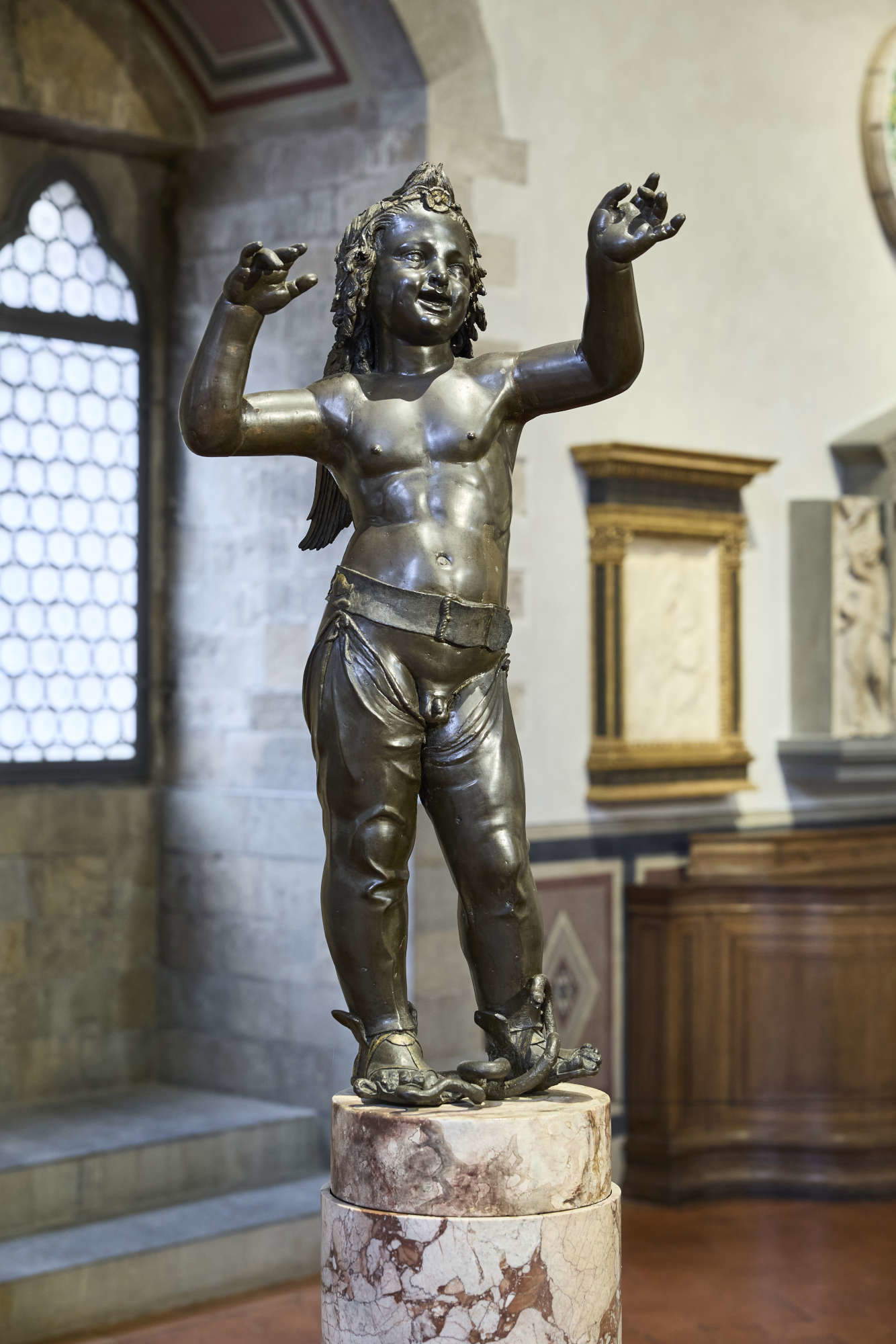
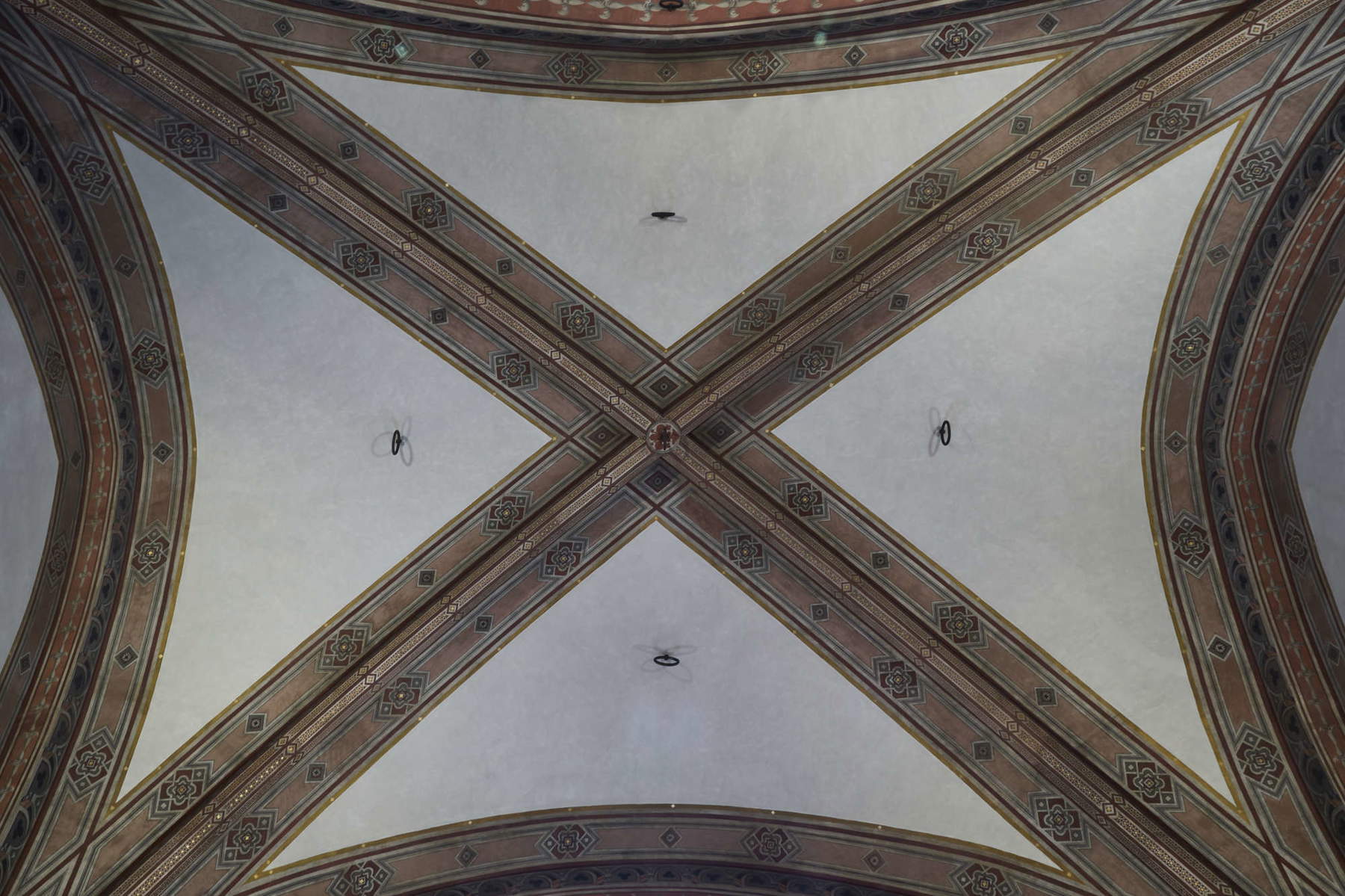
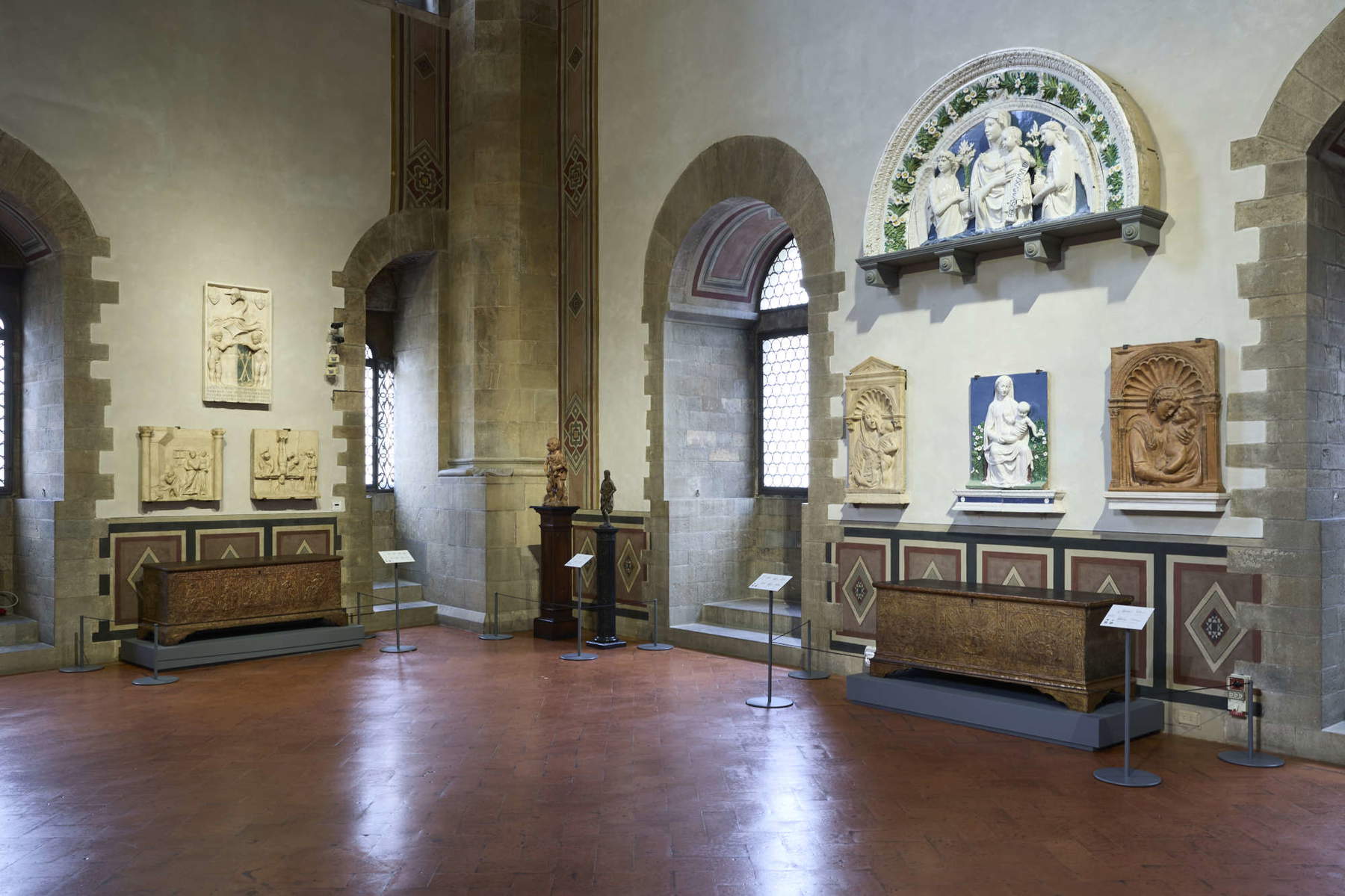
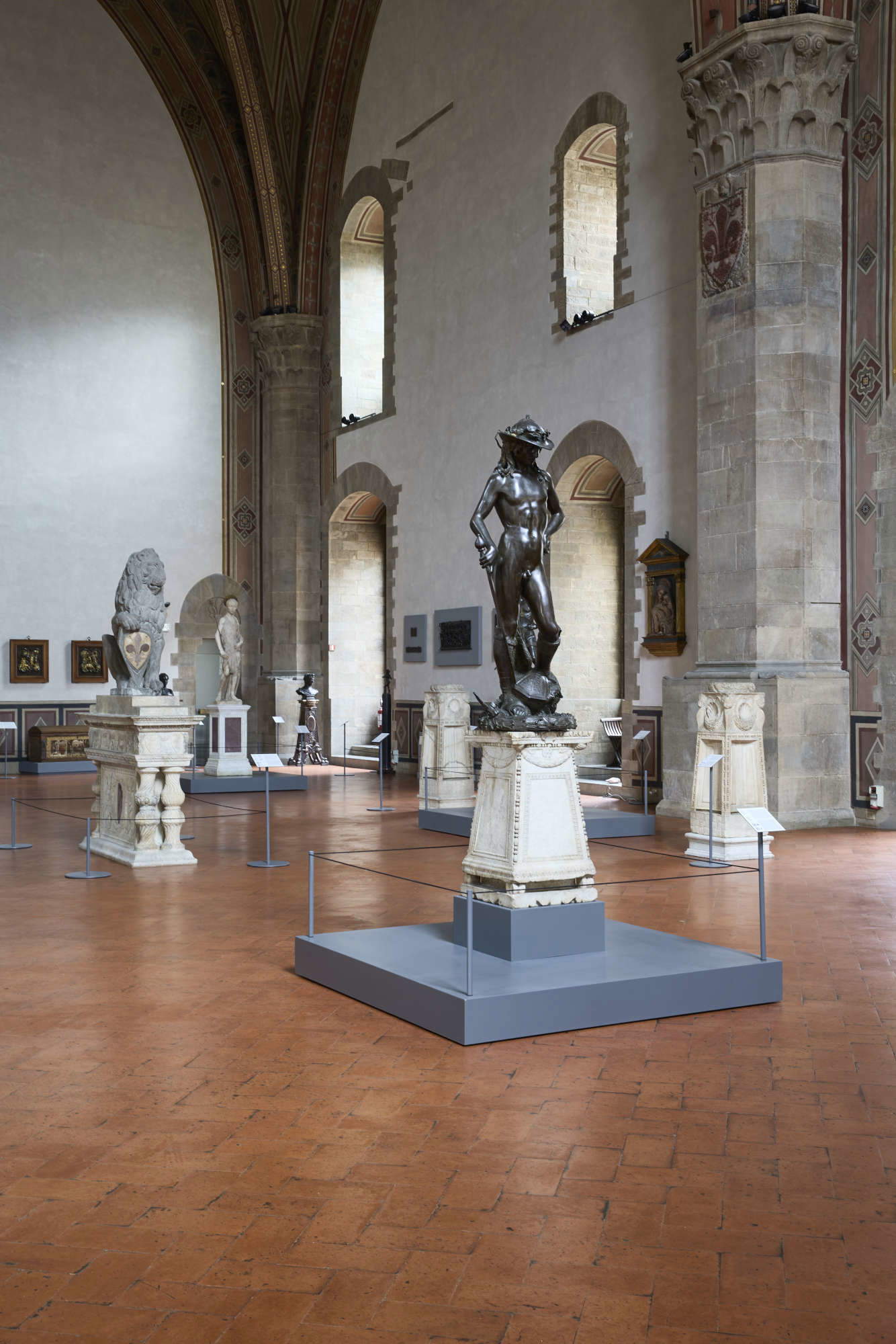
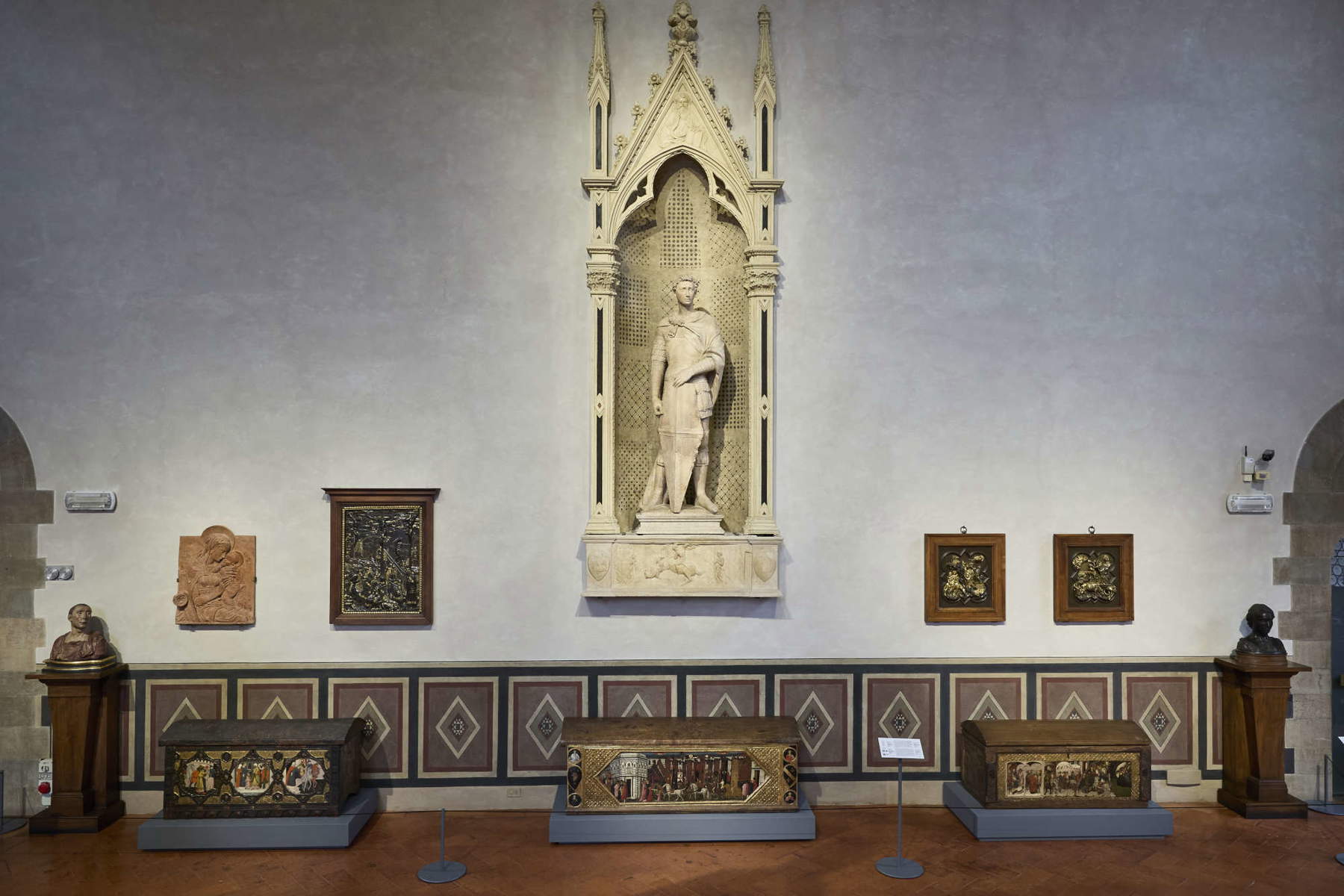
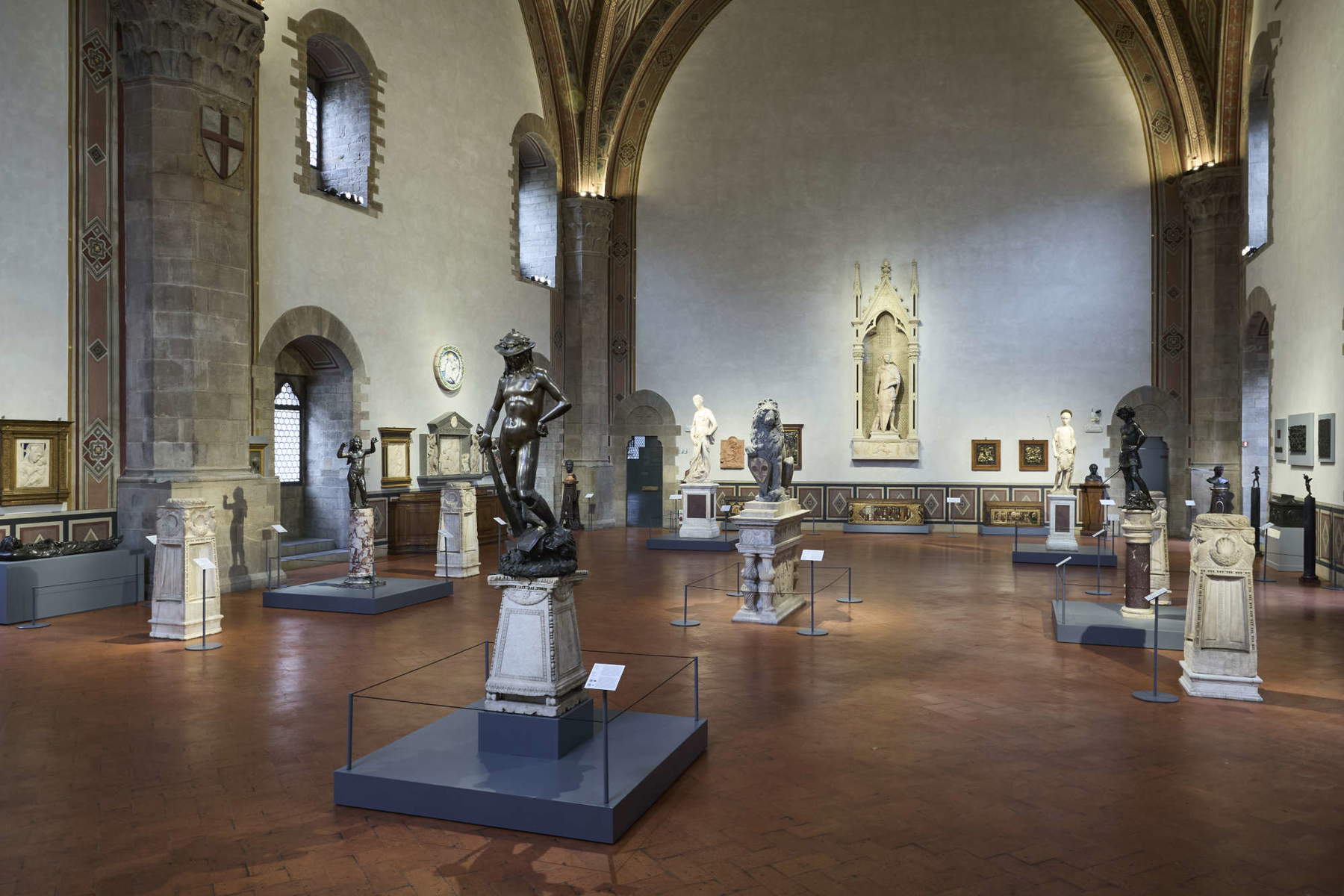
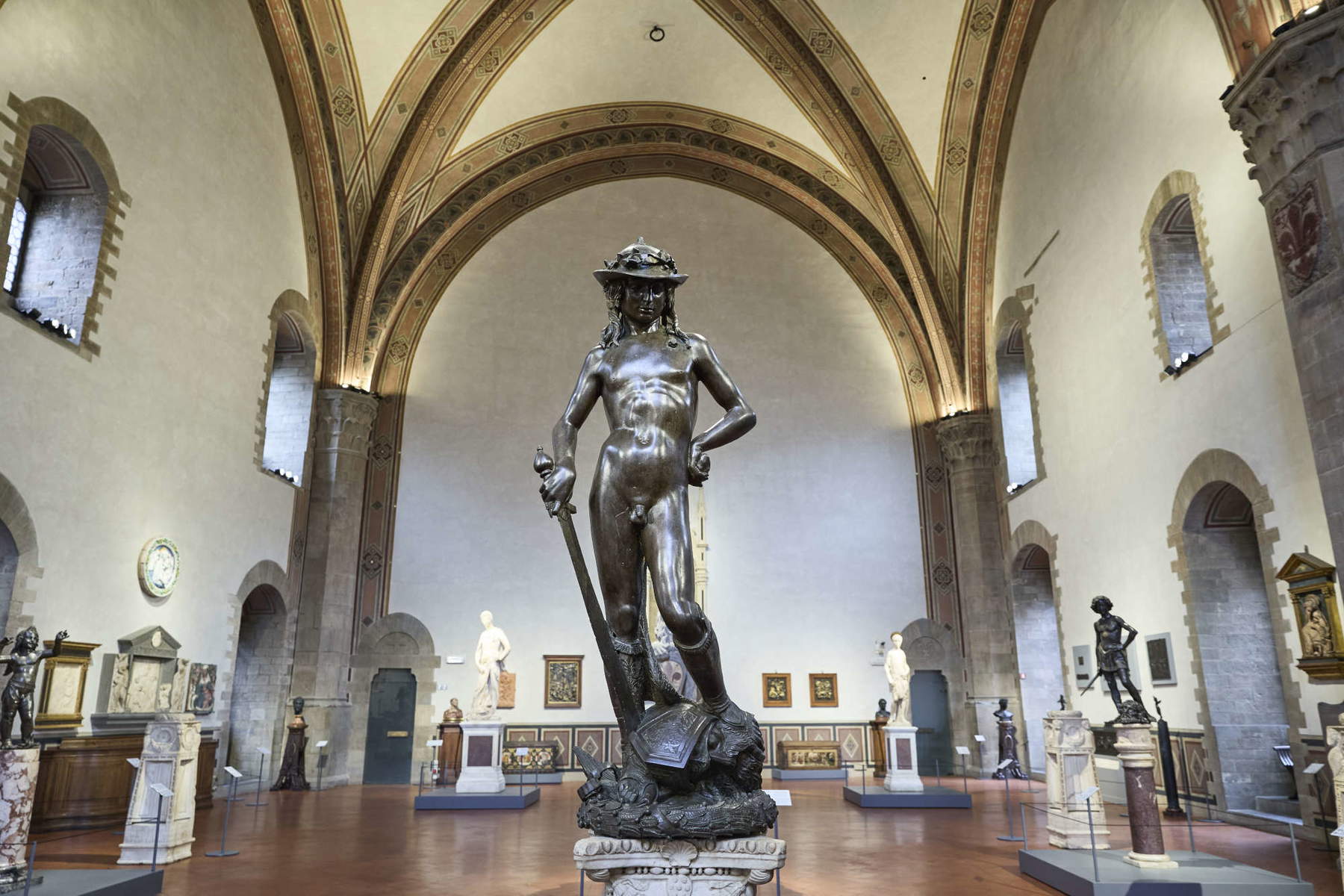
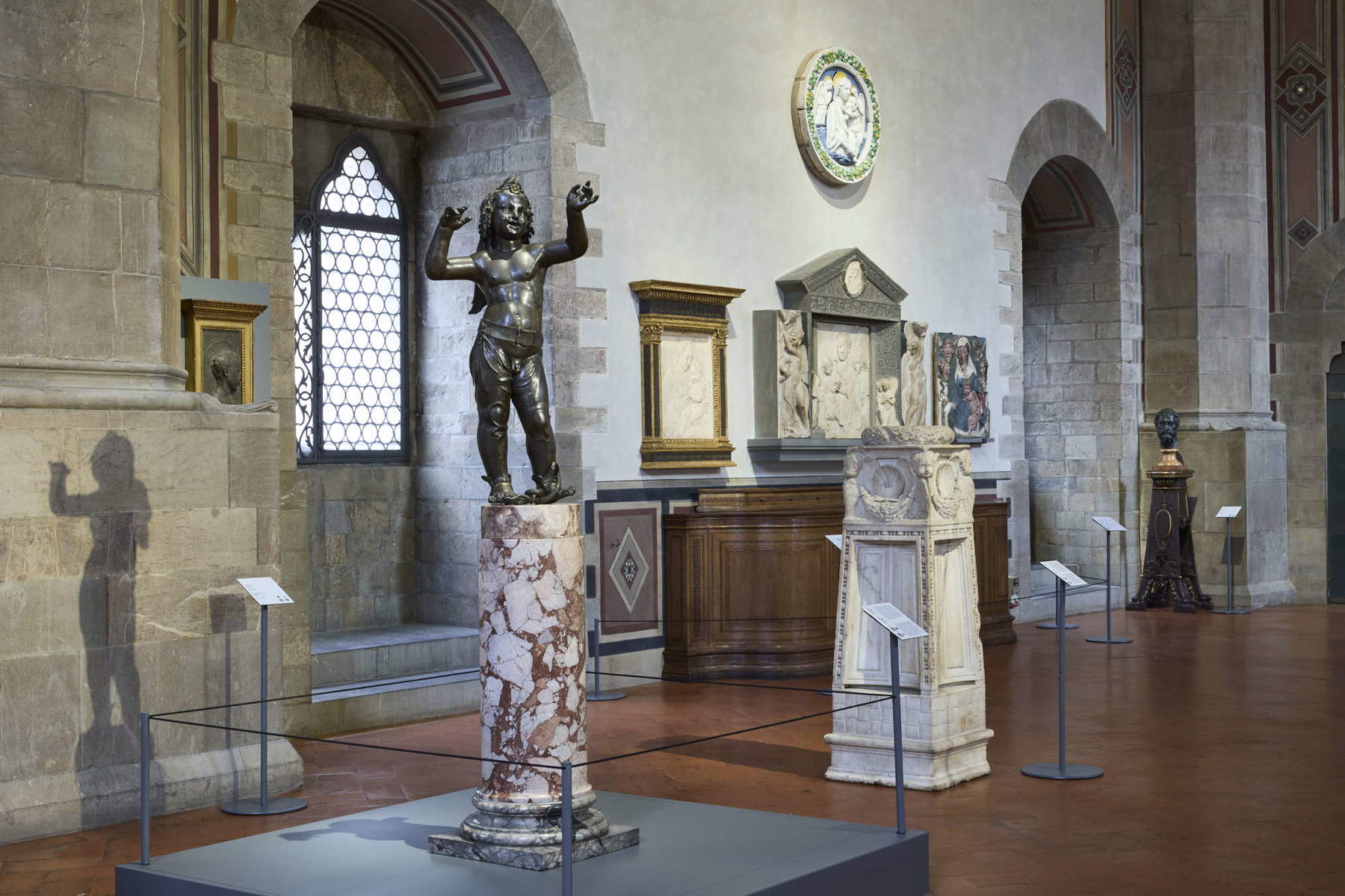
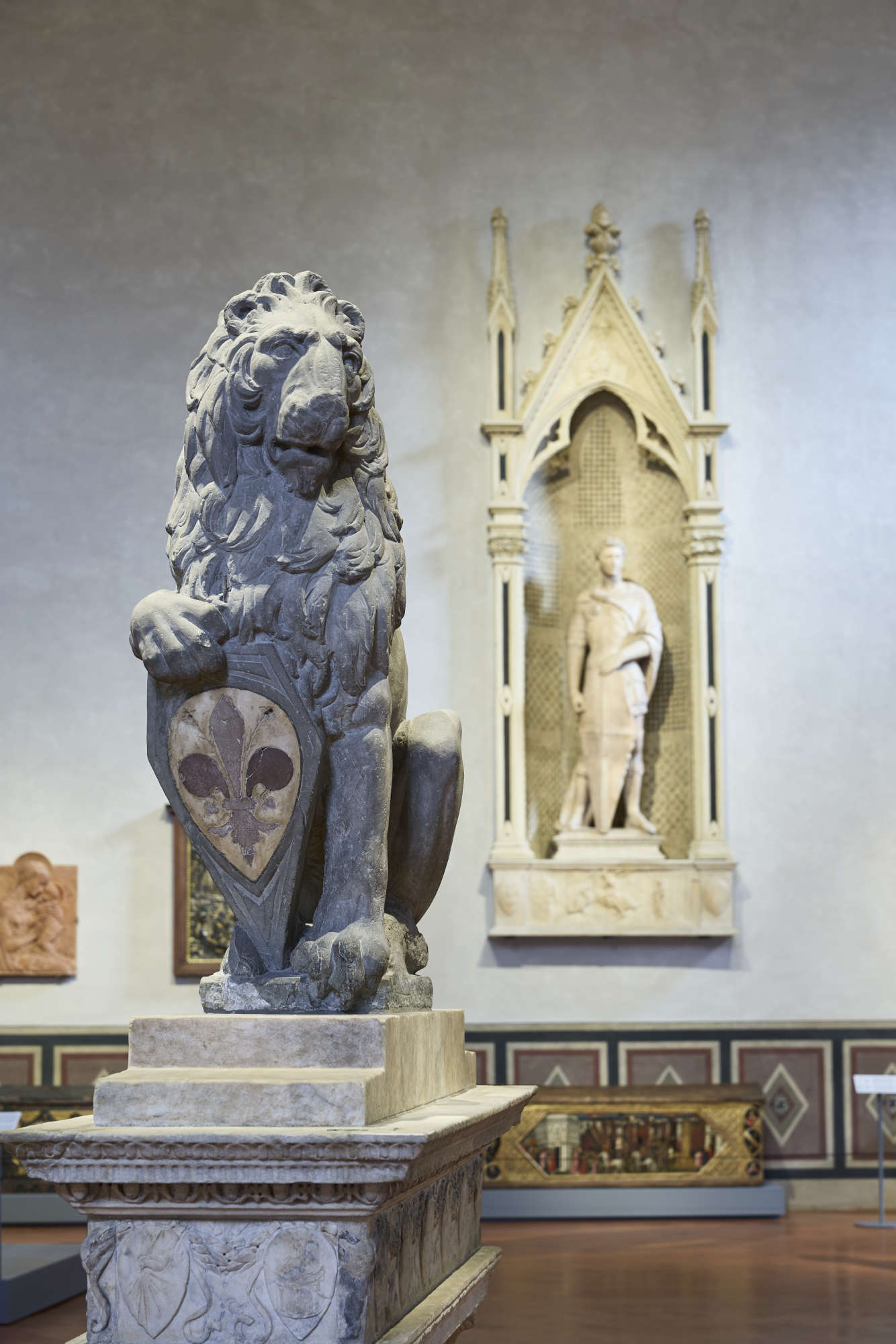
History of the Salone di Donatello
The Salone di Donatello belongs to the oldest core of the Bargello Palace, built starting in 1255. It was originally the great Sala dell’Udienza where the Council presided over by the Podestà, city authorities and representatives of the people met. It was here that Dante Alighieri’s death sentence in absentia was pronounced in 1302 and his perpetual exile decreed. During the nearly three centuries when the palace was converted into a prison-from 1574 to 1857-32 cells arranged on four floors and a small chapel had been carved out of this vast room.
In 1840, the discovery of Giottesque frescoes with Dante’s portrait in the nearby Magdalene Chapel drew attention to the palace’s dilapidation and the need for radical architectural restoration. Restoration, overseen by architect Francesco Mazzei, began in 1858 and ended in 1865, in preparation for the palace’s inauguration as the home of Italy’s first National Museum, in the same year that Florence became the capital of the Kingdom of Italy.
Among the various interventions that restored the palace’s ancient structure, that of the Salone di Donatello was the most spectacular: the hall’s imposing volume was recovered, and it was decorated with wall paintings inspired by surviving fragments of medieval frescoes.
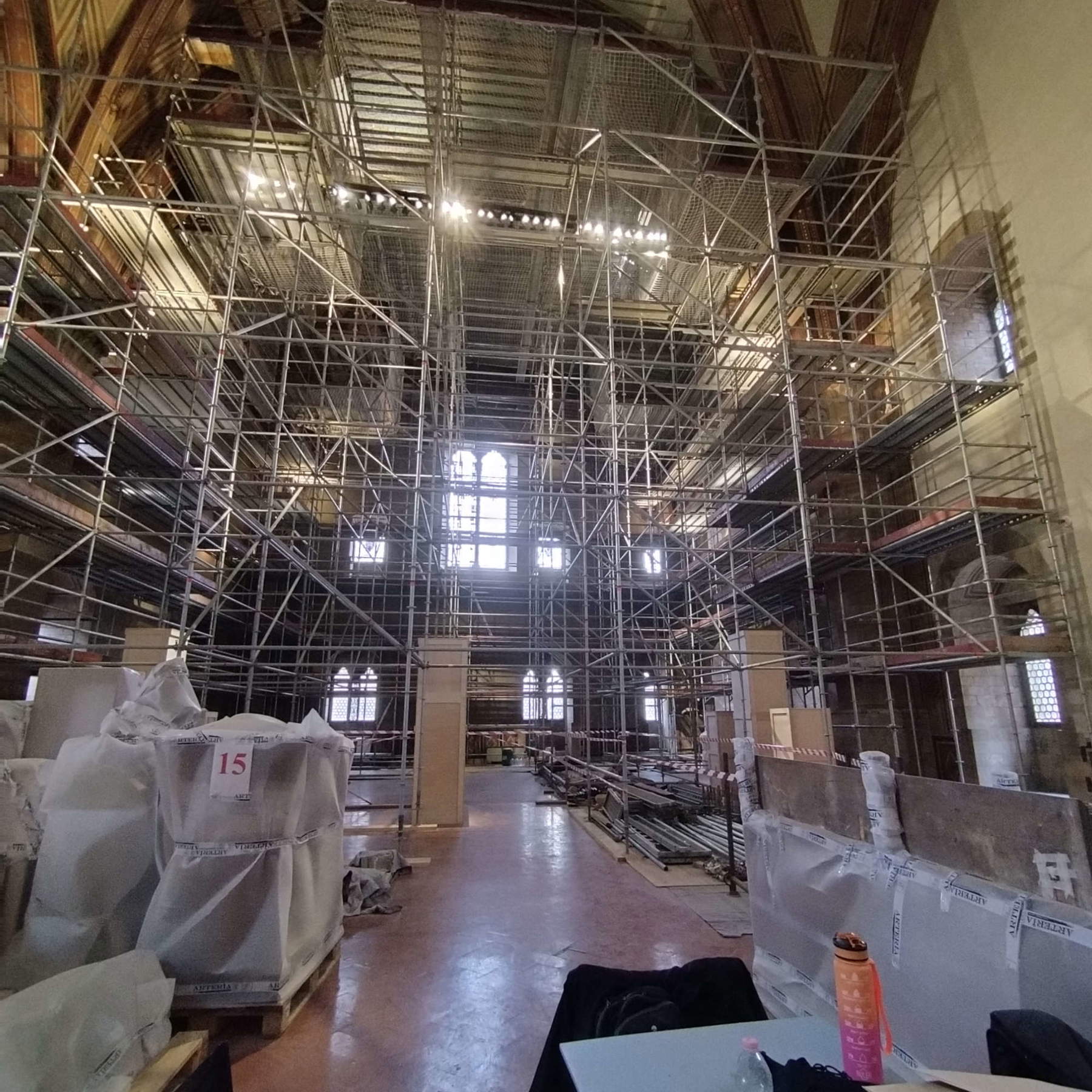
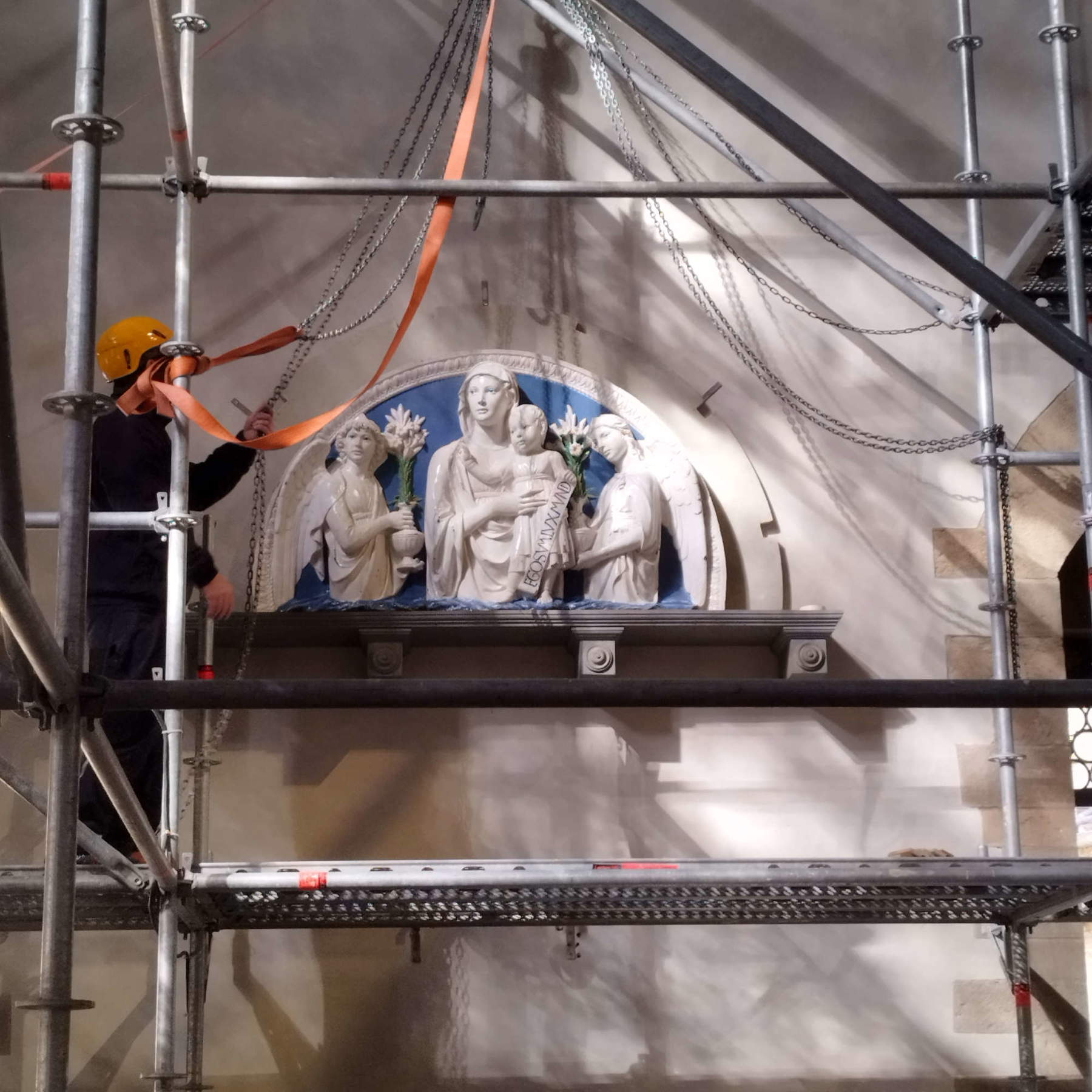
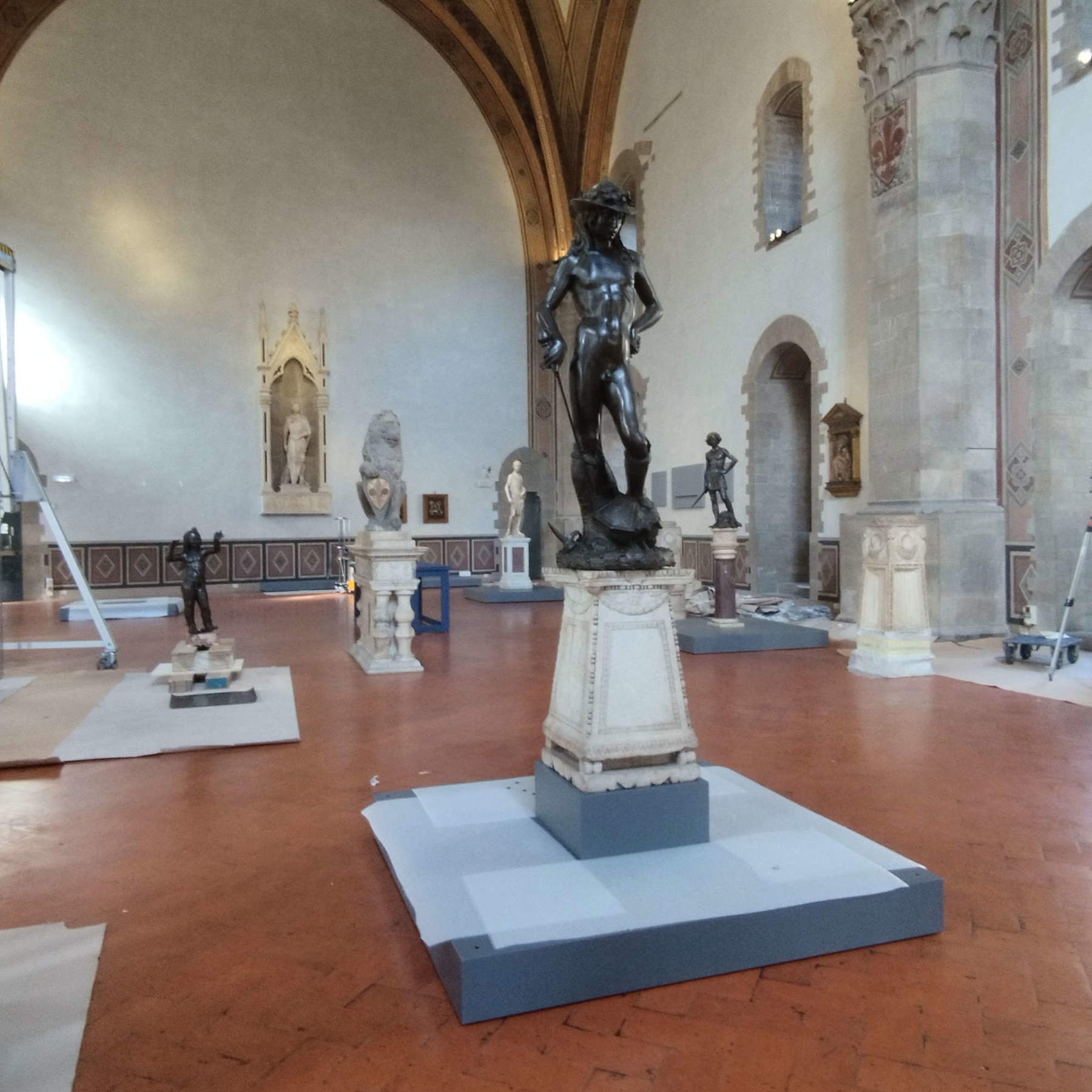
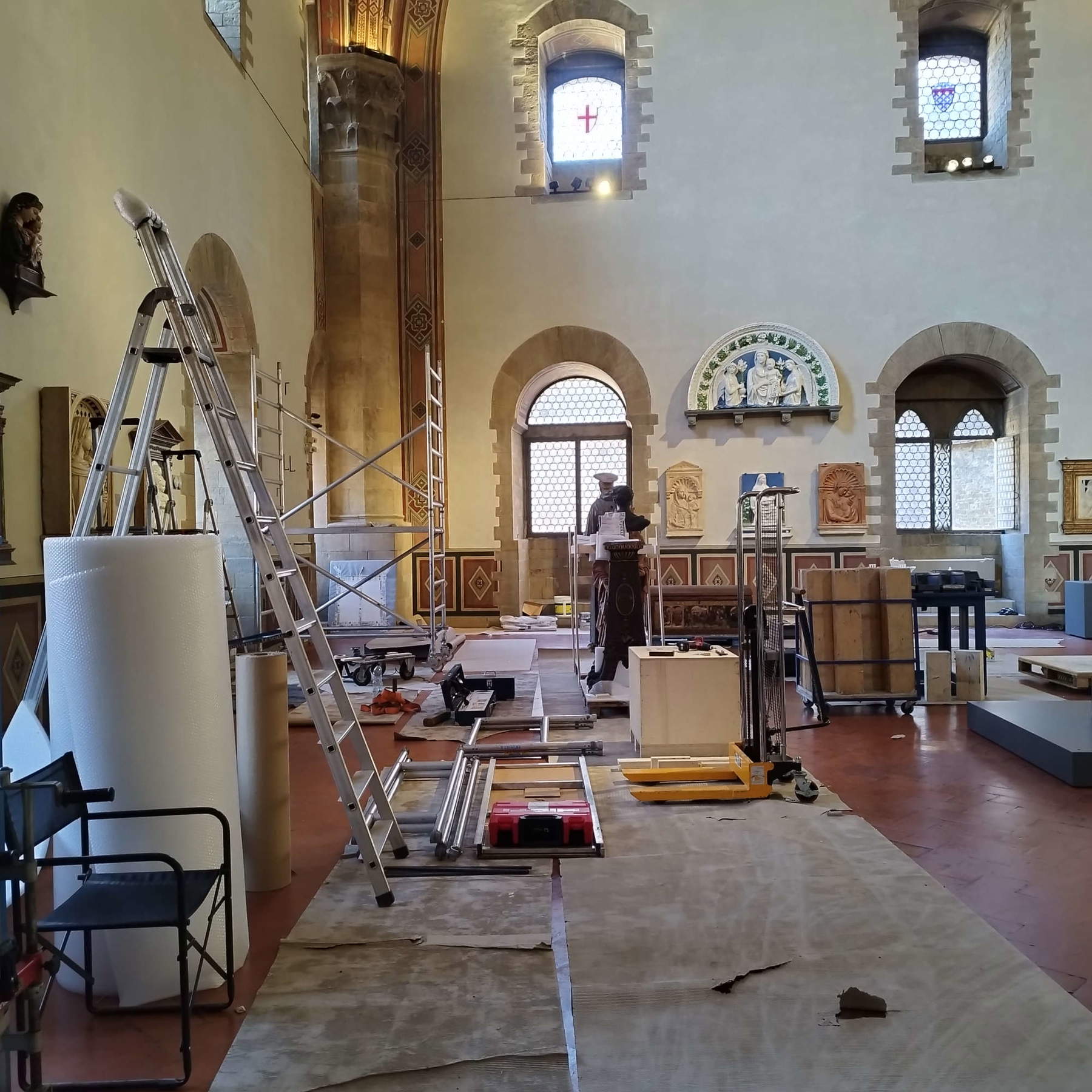
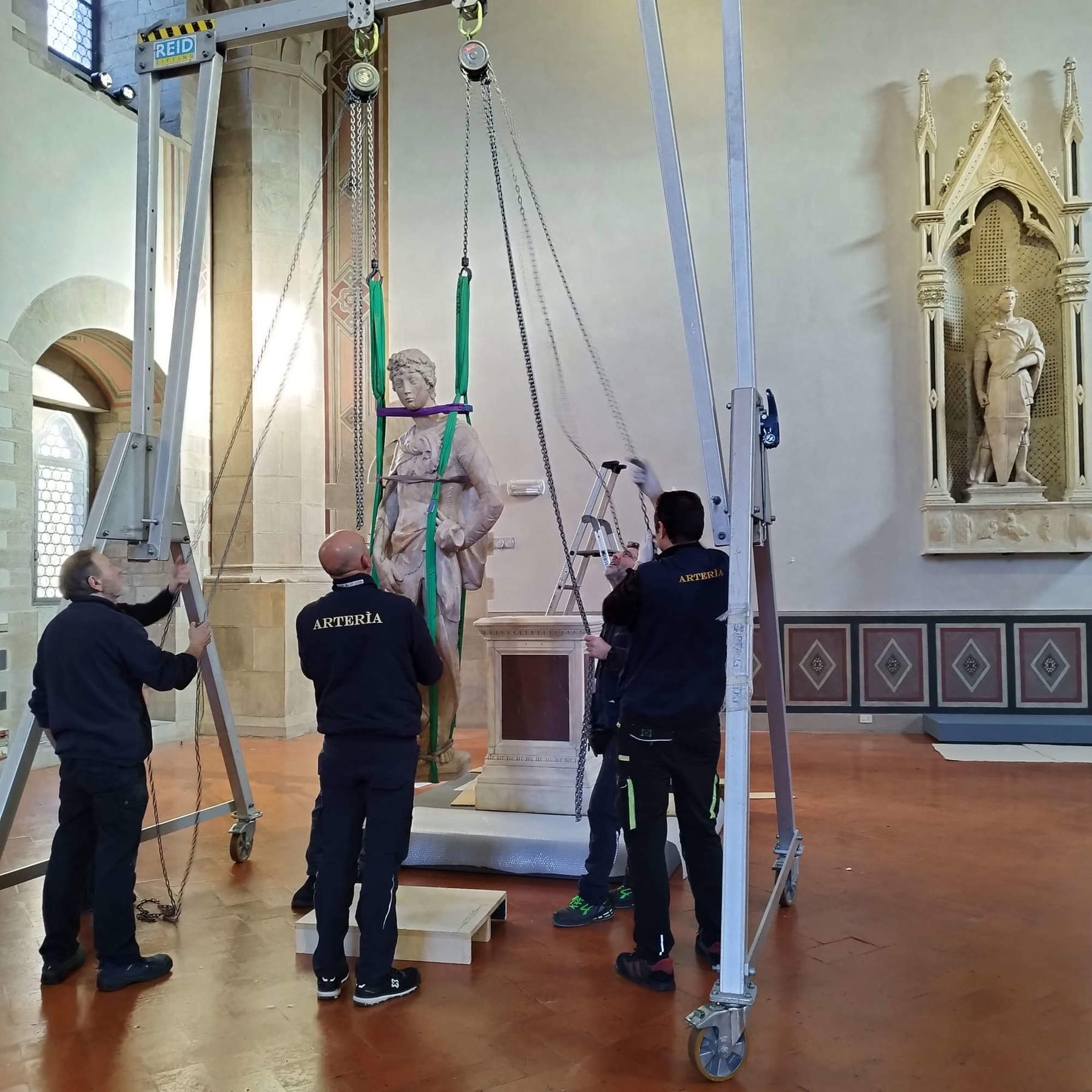
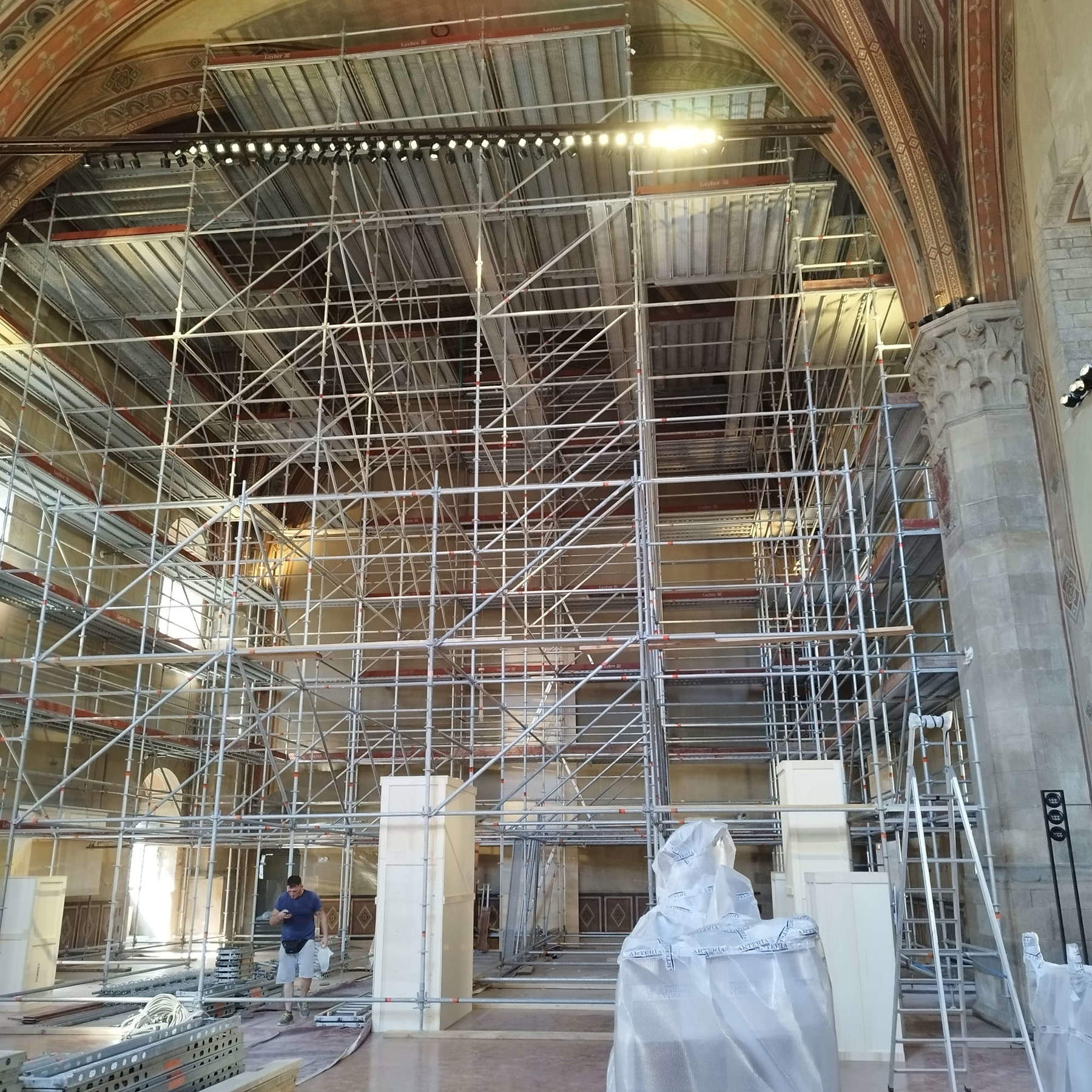
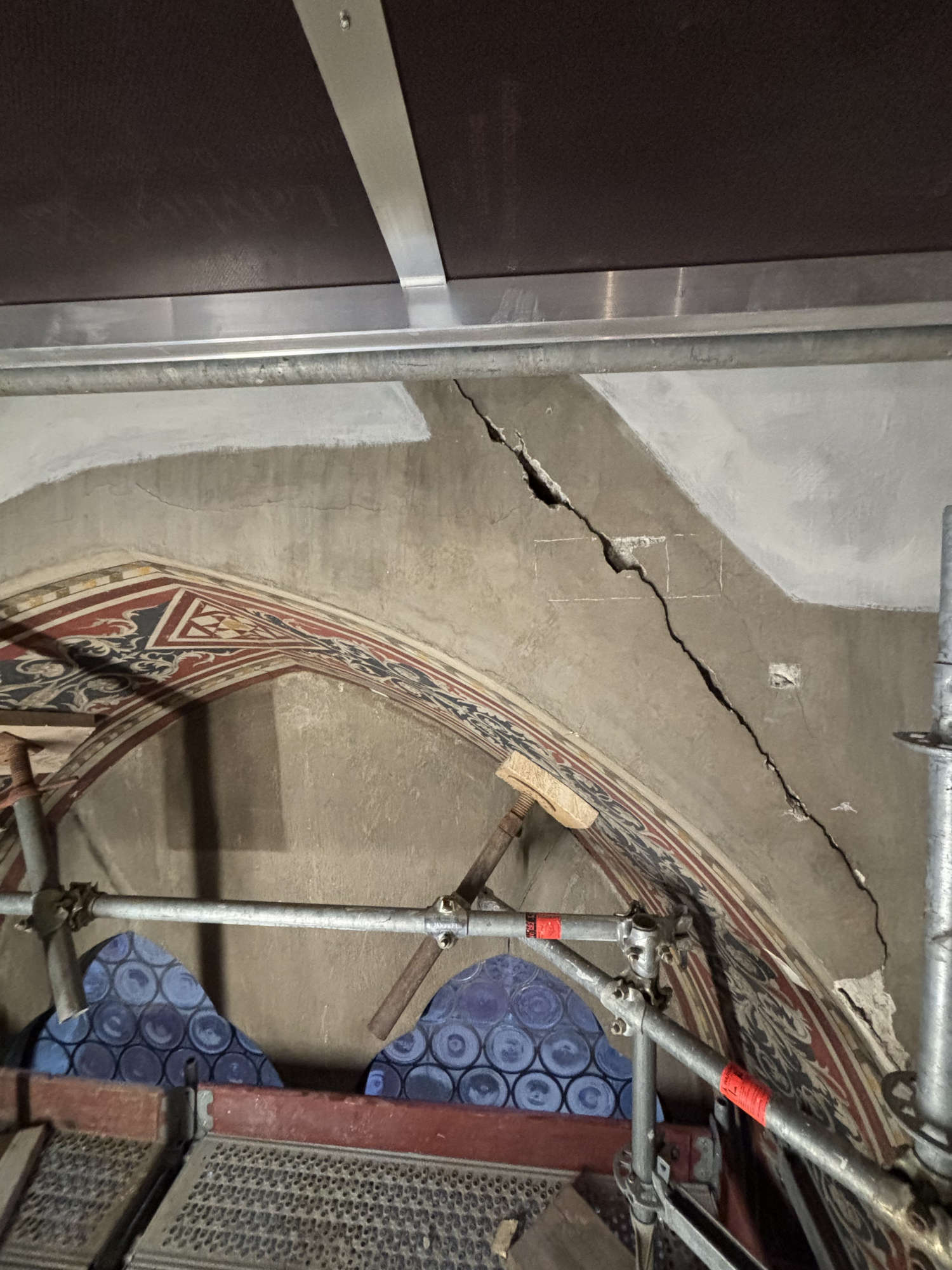
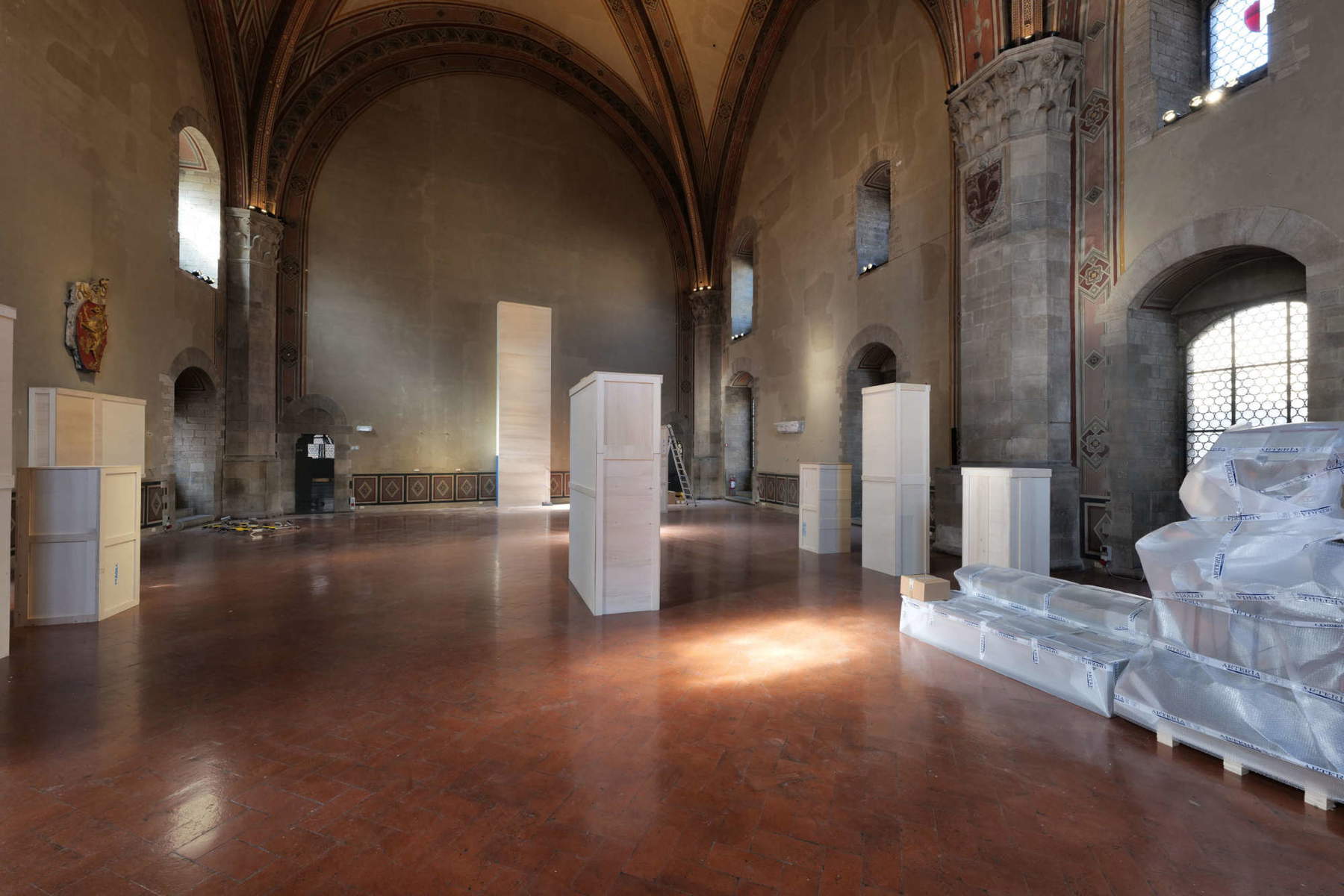
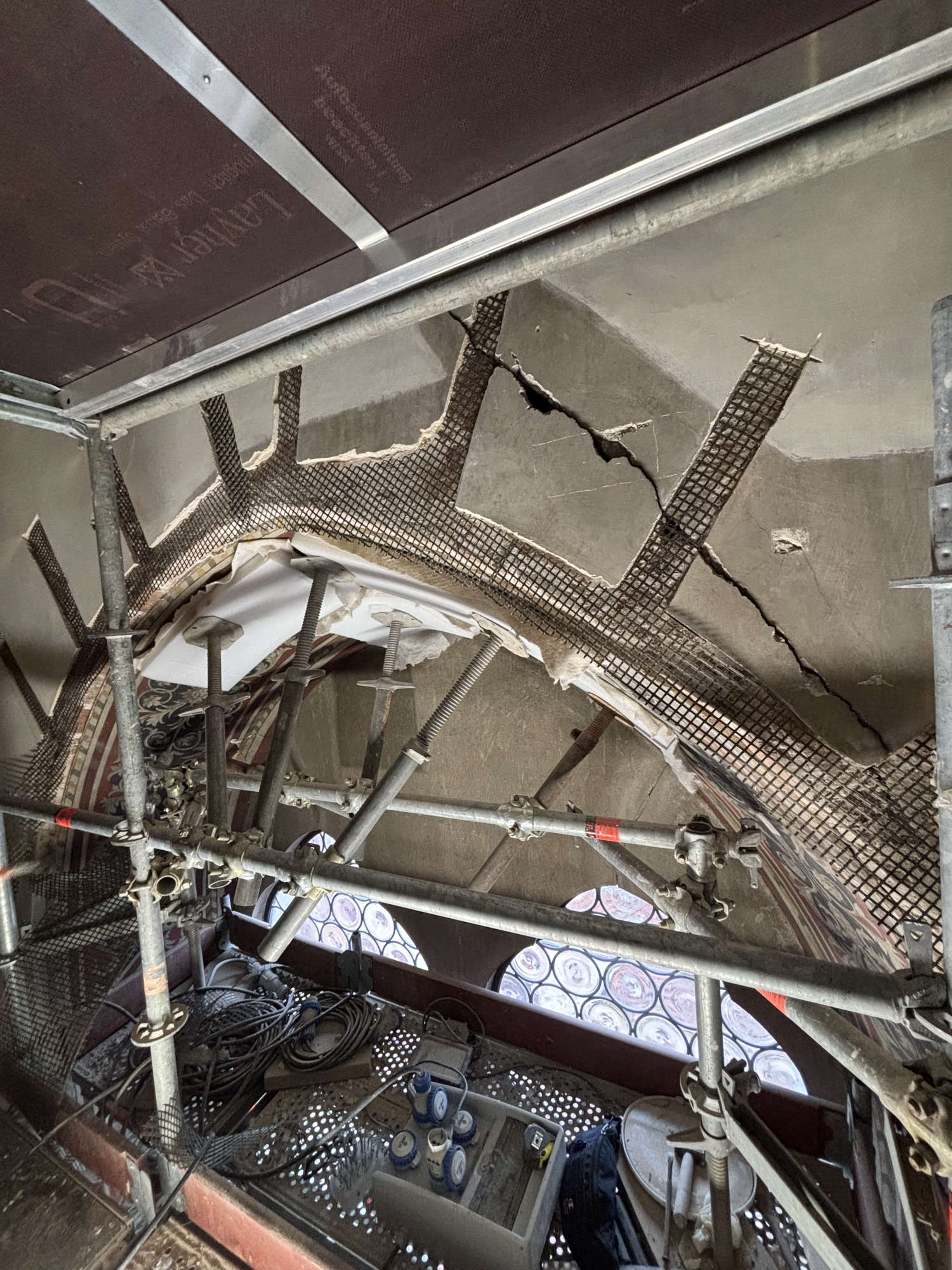
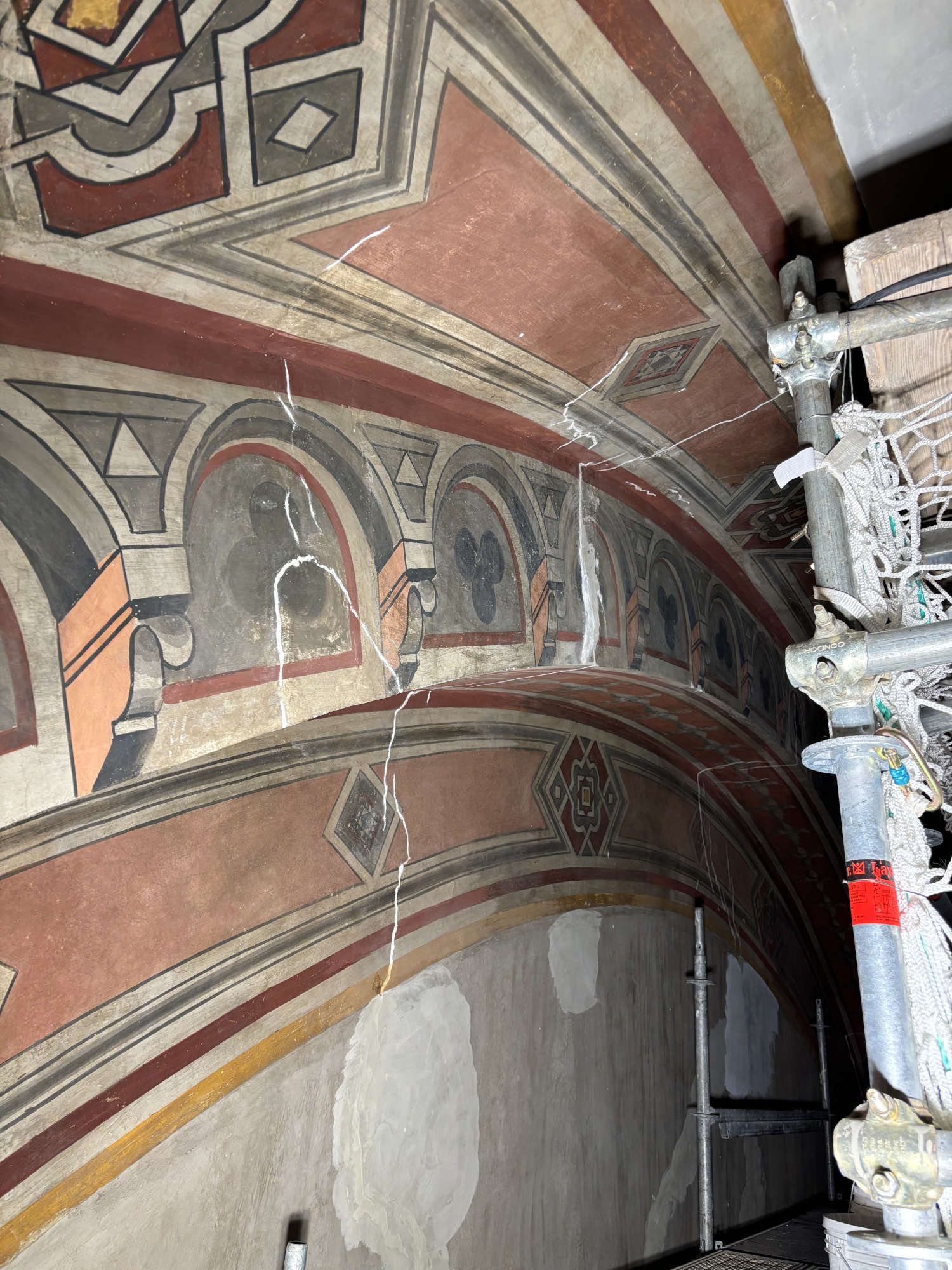
The arrangements from the 19th century to the present day
In its earliest arrangement, the Salone-at the time referred to as the “Gran Sala” -hosted celebrated 16th-century sculptural groups, with works by Michelangelo, Vincenzo de’ Rossi, Giambologna, Vincenzo Danti, and Donatello’s 15th-century marble David. In 1886, to celebrate the fifth centenary of Donatello’s birth, a memorable exhibition was planned, which took place the following year, in 1887: from then on, the Salone would forever bear the artist’s name.
The Donatello exhibition saw the bringing together of all the works of Donatello already in the museum, others that had arrived from outside Florence, and numerous plaster casts of unprepossessing originals, chief among them the life-size cast of the Equestrian Monument to Gattamelata, which remained at the center of the Salone until 1928. Over the decades, as the ’didactic’ core of copies was gradually dismantled, the Salone’s display was enriched with works by sculptors coeval with Donatello, such as Luca della Robbia and Lorenzo Ghiberti, or by his pupils, such as Desiderio da Settignano and Bertoldo, also thanks to new acquisitions.
Unlike other rooms in the museum, the Salone di Donatello has never undergone radical transformations that have changed its exhibition layout, except through frequent and minor changes over time. In the last decades of the twentieth century, the works were distributed over the entire floor plan of the hall, until they occupied the space in front of the entrance from the Verone.
In the early 2000s, also in view of the gradual growth of visitors, a new arrangement became necessary, oriented to ensure better usability and walkability by the public. The space was thus organized into two ideal naves, with the works arranged according to a logic that would encourage comparison between different artists or between works by the same sculptor, facilitating the reading of the itinerary. The major exhibition Donatello: The Renaissance of 2022, organized by the Bargello Museums and the Fondazione di Palazzo Strozzi, in collaboration with the Staatliche Museen in Berlin and the V&A in London, entailed a transformation of the Salone di Donatello, which, although temporary, offered insights that were significant results in the elaboration of the current intervention, aimed at renewing its organization and updating its exhibition criteria.
 |
| Florence, the Salone di Donatello at the Bargello reopens after a year with a new layout |
Warning: the translation into English of the original Italian article was created using automatic tools. We undertake to review all articles, but we do not guarantee the total absence of inaccuracies in the translation due to the program. You can find the original by clicking on the ITA button. If you find any mistake,please contact us.





